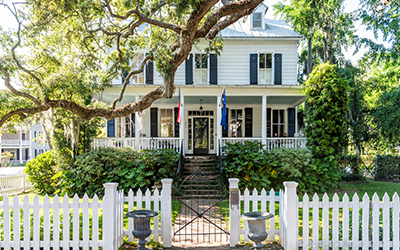 A historic home is the pride of many a homeowner, and it adds curb appeal to neighborhoods in your city. A historic home has an average of 5 percent more value over similarly sized homes in the same area, and homes in historic districts usually hold steady value, but improving infrastructure while maintaining or upgrading historic homes may be more difficult than homeowners expect.
A historic home is the pride of many a homeowner, and it adds curb appeal to neighborhoods in your city. A historic home has an average of 5 percent more value over similarly sized homes in the same area, and homes in historic districts usually hold steady value, but improving infrastructure while maintaining or upgrading historic homes may be more difficult than homeowners expect.
To begin with, many historic home were built before plumbing, electricity or flush toilets were standard and were retrofitted. Some may have been retrofitted many years in the past, meaning that homeowners could be unknowingly depending on knob-and-tube wiring, Orangeburg sewer lines and cast iron or galvanized steel pipes that have reached the end of their usable lifespan.
A plumbing leak can be even more devastating to a historic home – because of potential damage to a historic building’s original structure and possibly irreplaceable antiques or art. Fallout from a service line failure can be costly – in the thousands of dollars.
In addition, a historic building may not be up to code, and, if there is a plumbing failure or the hot water tank simply needs to be replaced, the code enforcement officer may require the homeowner to bring part – or even all – of a water system up to code. Homeowners’ insurance is unlikely to cover this, unless the policy has an additional “law and ordinance” rider. Many homeowners aren’t aware that homeowners’ insurance is unlikely to cover the cost of damages caused by maintenance issues – the everyday “wear and tear” of living in the home – let alone the cost to bring it up to code.
And those issues make historic home repairs a costly proposition even before a plumber even gets to work. Older houses often have beautiful – and sturdy – features that would be cost prohibitive to include in modern homes. However, when a plumber needs to get behind a wall quickly, it’s much easier and cheaper to do that with a drywall structure instead of plaster and lath. Plumbing systems in retrofitted historic homes are often not located in areas that are easy to access, making improving infrastructure more complicated and expensive.
Additionally, if a home is on a historic registry or in a historic district, repairs may need be approved before work can be done, and done in a way that retains the historic materials and is as unobtrusive as possible.
Historic homeowners have to deal with all of this on top of finding a licensed, reputable and insured plumber who will treat their home as if it were their own. Finding thoroughly vetted plumbers and going through the bidding process is just one more hoop for a homeowner to jump through.
NLC Service Line Warranty Program partners with municipalities to educate homeowners and offer affordable protection against potentially costly service line repairs. The Program uses a network of local plumbers who have gone through background and drug screenings. The Program’s 500-seat call center is staffed 24/7/365 to answer claims calls and dispatch contractors to address homeowners’ emergencies.
The Program is provided at no cost to cities, and partner cities can receive royalties based on participation.
To find out how you can help your residents achieve peace of mind, contact us.
